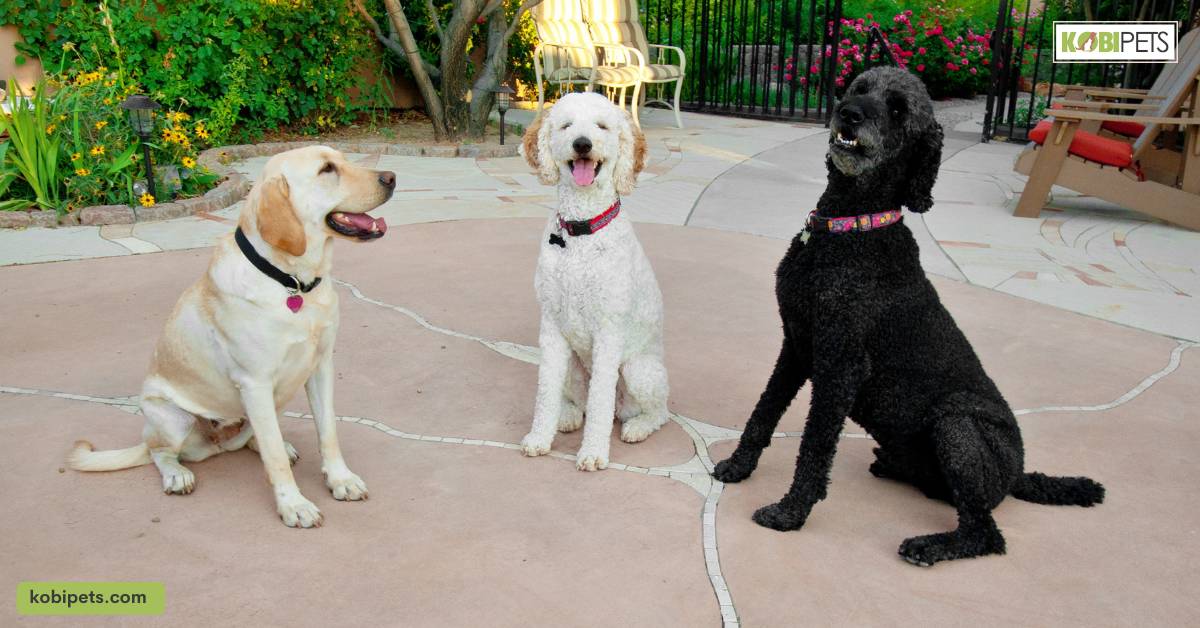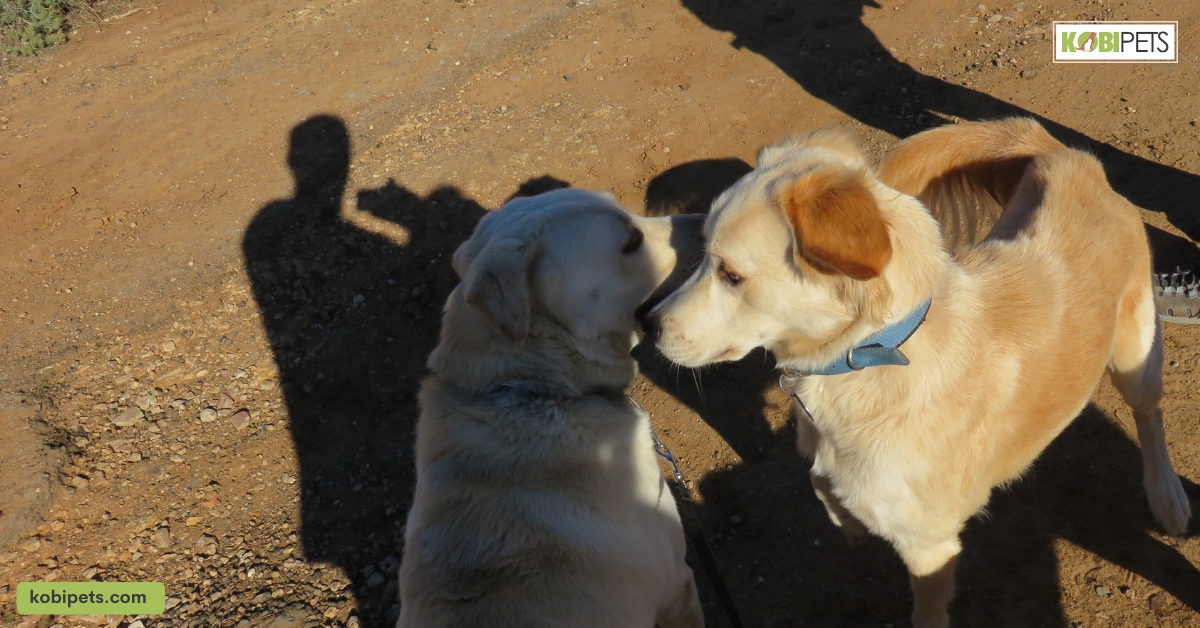Dogs are fascinating creatures that boast an impressive range of communication skills. Their ability to communicate with each other is essential for survival, as they rely on their pack and social bonds for everything from hunting and territory protection to grooming and raising their young.
Dogs communicate with each other using a complex system that humans may not always understand. From body language to vocalization, chemical signals, and play behavior, learn the seven most important things you need to know about dog communication in this article.
1. Body language
Body language is a crucial aspect of canine communication, and it plays a significant role in how dogs connect and understand each other. From subtle movements of the tail and ears to the more obvious wagging of the tail or baring of teeth, dogs use various forms of body language to express their emotions, convey messages, and establish their positions within a social hierarchy.
Understanding dog body language can help pet owners interpret their pet’s needs and emotions, creating stronger bonds and better communication.
Becoming familiar with the nuances of canine body language can also help people recognize when their dog is stressed, uncomfortable, or anxious, allowing them to intervene and prevent potential conflicts.
2. Vocalization
Vocalization is a crucial method of communication among dogs. The various sounds they make can convey a range of information to their fellow canines.
For instance, barks, yelps, or growls can indicate a warning signal or a sign of aggression. Similarly, whines and howls can signify distress, fear, or loneliness.
Interestingly, dogs can also use vocalization to convey their playful moods, such as a happy bark or a playful whine, indicating their willingness to engage in games. Moreover, vocalization is not just limited to sounds; dogs also communicate through their body language and gestures, which can help them express their emotions clearly.
Overall, understanding vocalization is key to understanding dog behavior, and it can assist dog owners in responding appropriately to their pets.
3. Chemical signals
Chemical signals play a crucial role in how dogs communicate with each other. These signals, also known as pheromones, are responsible for passing on information about a dog’s age, gender, health, and reproductive status.
The chemical messages are released from glands in various parts of a dog’s body and can be detected by other dogs through their sense of smell. This allows them to gather information about each other without physical contact or vocalizations.
Chemical signals can also help dogs to identify familiar individuals or detect danger in their environment.
Understanding these signals is essential in building stronger bonds with our canine companions and even helping them overcome behavioral issues.
4. Play behavior
Play behavior is a crucial form of communication in dogs. It allows them to interact with each other, build bonds, and improve their social skills. Play behavior can range from gentle pawing to roughhousing, depending on the dogs involved and their personalities.
Through play, dogs can learn to read each other’s body language, establish dominance, and negotiate boundaries. It’s important to note that play behavior should always be monitored to ensure that it remains safe and doesn’t escalate into aggression.
Understanding and appreciating the role of play behavior in dog communication can help pet parents facilitate positive interactions between their furry companions.
5. Pack hierarchy and social order
Understanding pack hierarchy and social order is essential when trying to comprehend how dogs communicate with each other. Dogs are social creatures that form packs, and within these packs, they establish an intricate social order with clear rankings.
This social ranking is based on a range of factors such as age, size, and temperament. The pack hierarchy is essential to the health and safety of the group, and all dogs must respect their rank and the ranks of those above them.
In this way, dogs are constantly communicating with each other through body language, vocalizations, and actions to ensure a harmonious pack dynamic.
By recognizing and respecting this order, we can better understand our furry friends and provide them with the proper socialization and training they need to thrive.
6. Communication with other animals
Dogs are fascinating creatures that communicate in a variety of ways, not only with their own kind but with other animals as well. While humans rely on spoken and written language to get their messages across, dogs use a combination of body language, vocalizations, and scents to convey information.
Whether it’s a warning bark to alert others of danger or a playful growl during a game of tug-of-war, dogs have a wide range of communication methods at their disposal.
Additionally, dogs can communicate with animals outside their own species, such as cats, birds, and even humans, using similar methods.
Understanding how dogs communicate with other animals can help us build stronger bonds with our furry companions and appreciate the unique ways they express themselves.
7. Communication with humans
Communication with humans is an essential aspect of a dog’s life as it helps them form strong bonds with their human companions. Dogs communicate with humans in various ways, including body language, barking, and whining.
A dog’s body posture can provide crucial information about its emotions and intentions. For instance, a relaxed tail wag indicates a friendly dog, while a tucked tail indicates fear or anxiety. Additionally, barking and whining are important vocal cues used by dogs to communicate with humans.
A dog’s bark can indicate a range of emotions, including fear, excitement, and territorial warning. In contrast, whining is typically associated with anxiety or the need for attention.
Strong communication skills between dogs and their human companions can create a rewarding and fulfilling relationship for both parties.
8. Training
Training can help improve dog-human communication by teaching them how to understand verbal commands and body language cues. By providing clear instructions and consistent rewards, pet owners can teach their canine companions basic commands such as “sit”, “stay”, and “come”.
This can help create a deeper understanding between pet owners and their dogs, allowing them to better recognize each other’s needs and emotions. Additionally, training can also instruct owners on how to act around their canine companions in order to prevent misunderstandings and potential conflicts.
Training is an essential part of communicating with dogs, and it can help pet owners build strong relationships with their furry friends.
In conclusion
Dogs have a complex system of communication that involves body language, vocalizations, and pheromones. From wagging tails to high-pitched barks, dogs use these signals to convey a range of emotions and express their intentions to other dogs. By observing their behavior, we can better understand their needs and emotions, and provide the proper training and care to ensure their happiness and well-being.














